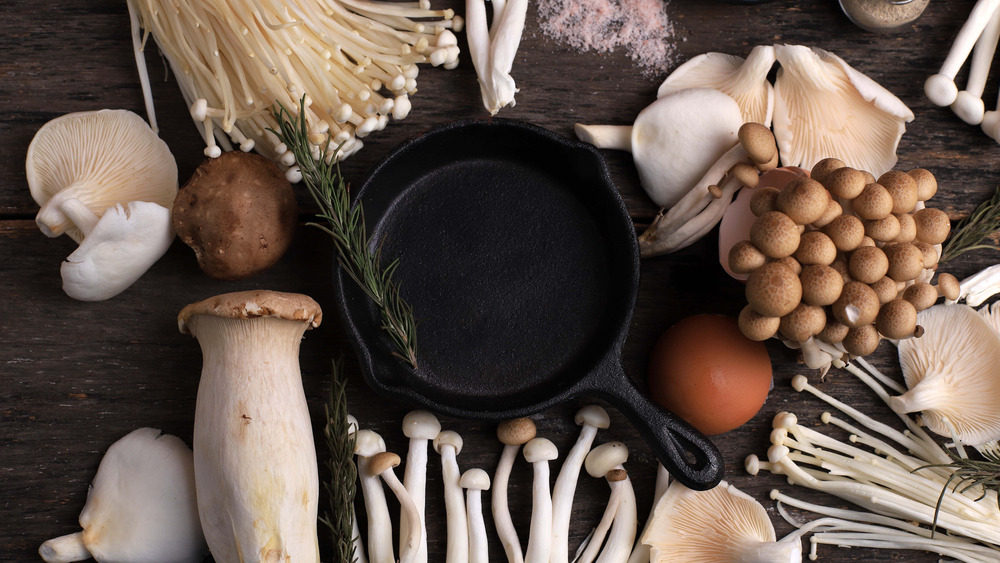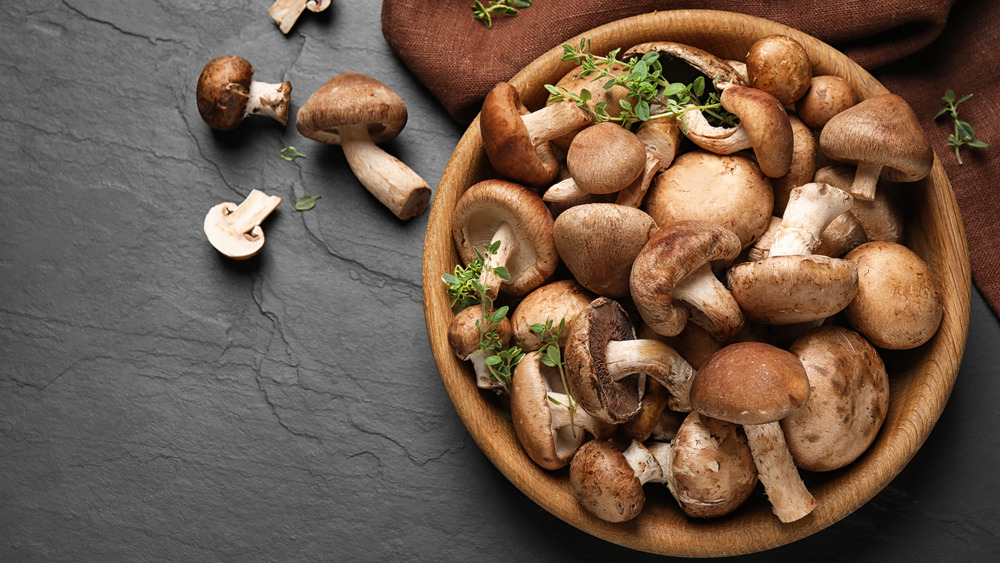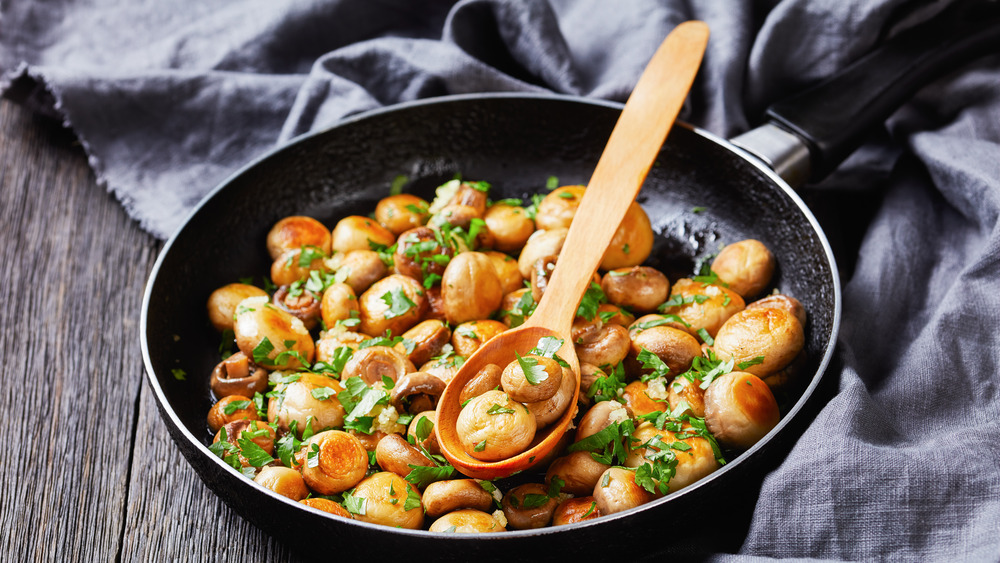The Surprising Mushroom Rule It's Okay To Break
As with cilantro and durian, mushrooms seem to be one of those love-them-or-hate-them foods, with some diners shunning their slippery texture and others reveling in their meaty umami flavor. Count us in the latter camp: we love these fantastic fungi, often cooking them up at home to pile atop burgers or tuck inside omelets.
One thing that gets in our way, though, is all the fanfare surrounding the preparation of mushrooms. More specifically, we've been taught that moisture is the number one enemy of shrooms: That's because mushrooms are mostly water to begin with — between 85 and 95 percent H2O, in fact — we must avoid, at all costs, adding more water, lest our shiitake and creminis turn out soggy instead of caramelized (via Mind Body Green). To that end, conventional cooking advice urges home cooks to brush or wipe mushrooms clean instead of rinsing them, and to cook them, uncrowded, in a scorching-hot pan so that they sear instead of steam (via Bon Appétit). All this avoidance of dampness really puts a damper on our groove in the kitchen.
But what if moisture isn't the mushroom enemy we thought it was? As it turns out, it isn't. Read on to discover why it's totally fine to rinse your mushrooms, and even — gasp! — to pile 'em by the plenty into a pan.
The wet-n-wild way of cooking mushrooms
There's actually plenty of evidence that washing mushrooms is just fine. As Mashed has covered, as long as the mushrooms are whole, not sliced, rinsing them off is just fine. Sure they might take on a little bit of water, but that water will evaporate during the cooking process — which brings us to the next point.
Although the prevailing advice to cook dry mushrooms in a hot pan — a method espoused, variously, by recipe blog Inspired Taste, tapas chef Alex Raij, and culinary hero Julia Child — it's not necessary to achieving perfectly caramelized mushrooms (via Food52, La Crema). As food writer Alison Robicelli discovered, an "if you can't beat 'em, join 'em," waterlogged method to sautéing mushrooms works just fine.
In an article for The Takeout, Robicelli adapts a Cook's Illustrated technique for sautéed mushrooms — more on that later — which goes full speed ahead into steamland, but with perfectly browned, un-soggy mushrooms as a result. While developing a recipe for caramelized mushroom pasta, Robicelli decides to wash her mushrooms, slice them, then steam them in a covered pan. After the mushrooms expel the majority of their liquid, Robicelli uncovers the pan, allows the liquid to evaporate, and then adds her fat. Since the mushrooms are already mostly dry, they brown up real nice — with much less drama and fanfare than the usual "no water!" method. Let's take a look at why this easier, lazier approach to sautéing mushrooms is a win-win.
Steam — then sear — for a deliciously shroomy result
In the technique which inspired food writer Alison Robicelli's caramelized mushroom recipe for The Takeout, Cook's Illustrated senior editor Lan Lam even goes a step further, not only steaming mushrooms in their own liquid in a covered pan but actually adding additional water to jump-start the steaming process (via Cook's Illustrated). Whoa, what?
As Lam explains, "Surrounding the mushrooms with steam from the get-go would mean that all of the mushrooms would start cooking right away. Their cells would rupture sooner so that the mushrooms could rapidly exude moisture — the step that's the requisite precursor to browning."
With the conventional method of sautéing mushrooms in plenty of fat, the fungi will eventually give up all their moisture and then begin to brown in the fat. It does work, but with the Cook's Illustrated method, steaming the mushrooms gets out all the moisture right away. Only then is fat added, and, as it turns out, much less is required to get the shrooms to that perfect toasty shade and flavor that we all (well, most of us) love. So the next time you're craving mushrooms but dreading the finicky preparation, say yes to steam and you'll be just fine.


